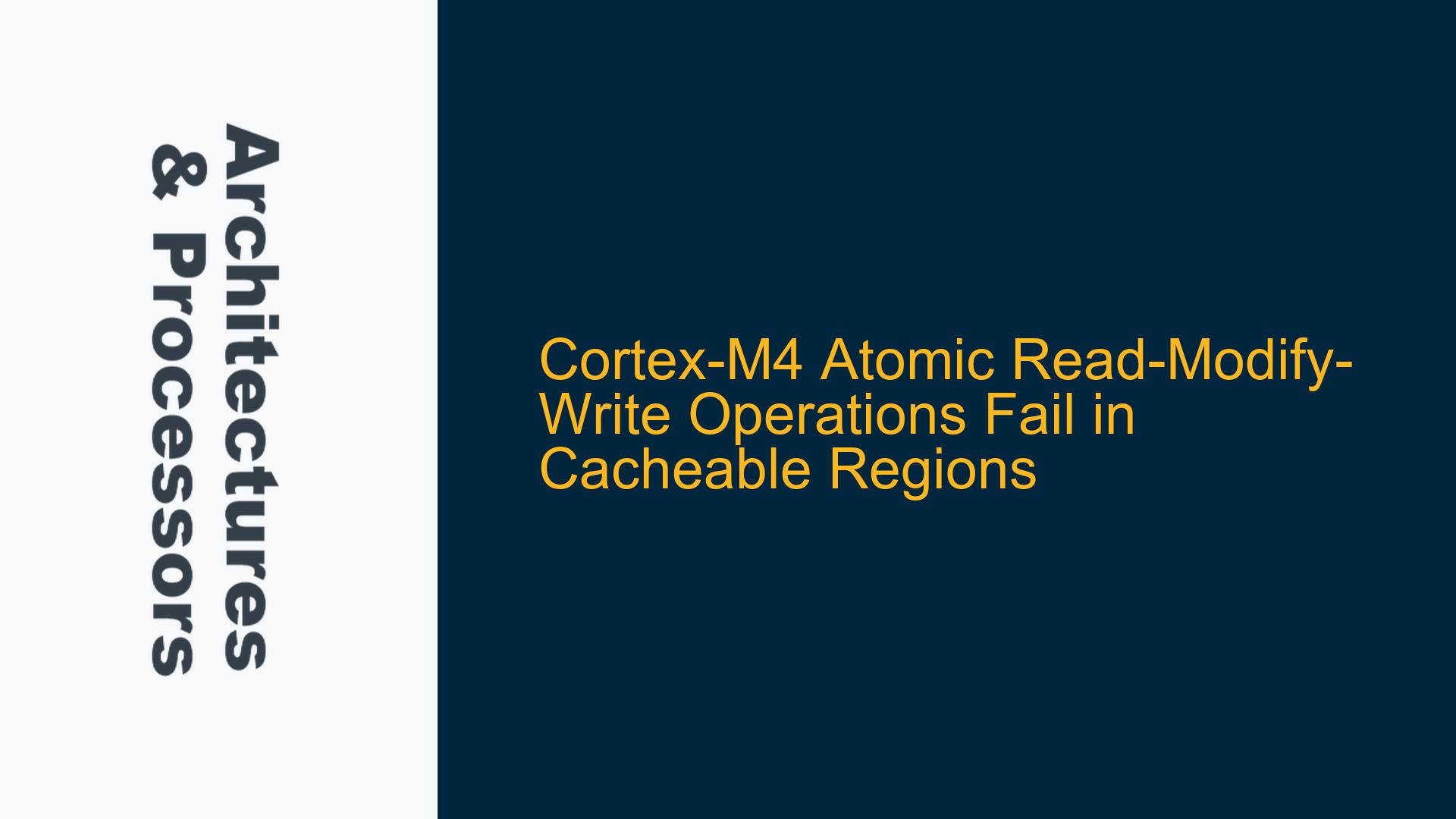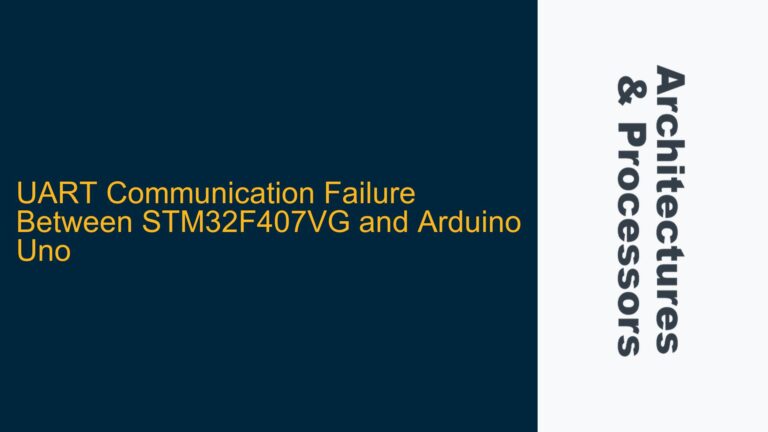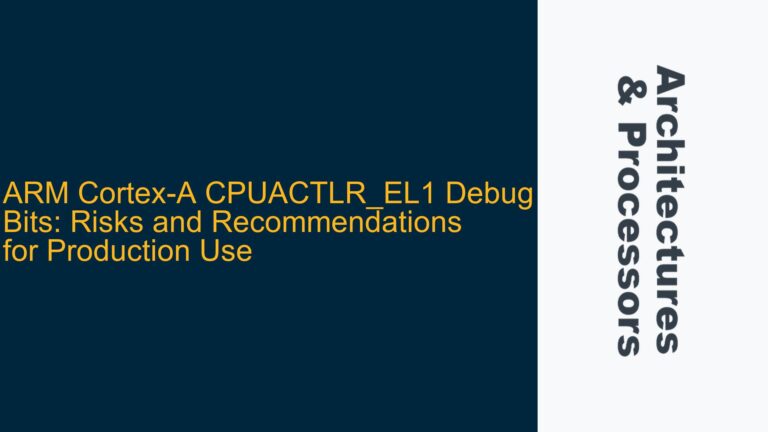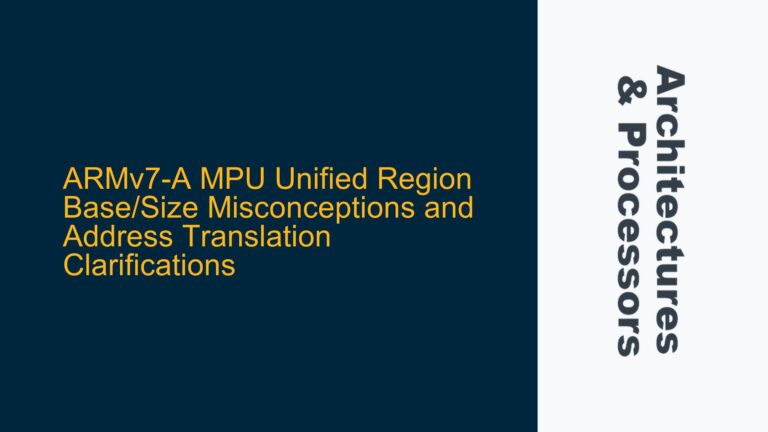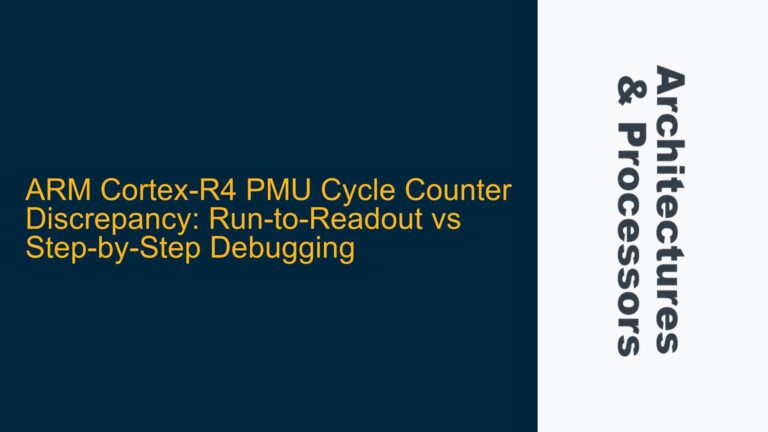Cortex-M4 Atomic Operations and Cache Coherency Challenges
The Cortex-M4 processor, a widely used ARM core in embedded systems, is designed to handle atomic operations efficiently. However, when these operations are performed in cacheable memory regions, unexpected behavior can arise, particularly with read-modify-write (RMW) operations such as atomic_compare_exchange_strong and fetch_add. While simple atomic operations like atomic_load and atomic_store function correctly in cacheable regions, RMW operations may fail to operate as intended. This discrepancy suggests a deeper issue related to cache coherency, memory barriers, and the interaction between the Cortex-M4 core and the memory subsystem.
The Cortex-M4 relies on Load-Exclusive (LDREX) and Store-Exclusive (STREX) instructions to implement atomic RMW operations. These instructions are designed to ensure atomicity by monitoring exclusive access to a memory location. However, when the memory region is cacheable, the behavior of these instructions can be influenced by the cache architecture, leading to scenarios where the cache and memory are not properly synchronized. This issue is particularly prevalent in systems where the Cortex-M4 is integrated with complex memory hierarchies, such as those found in i.MX6 or i.MX7 devices.
To understand the root cause of this issue, it is essential to examine the Cortex-M4’s memory model, the role of cache coherency, and the specific restrictions imposed by certain system-on-chip (SoC) configurations. Additionally, the implementation of memory barriers and cache management techniques must be carefully analyzed to ensure proper synchronization between the cache and main memory.
Cacheable Memory Regions and Exclusive Access Restrictions
The Cortex-M4 processor supports atomic operations through the use of LDREX and STREX instructions. These instructions are designed to provide exclusive access to a memory location, ensuring that no other process or core can modify the location during the RMW operation. However, when the memory region is cacheable, the behavior of these instructions can be affected by the cache architecture.
In cacheable memory regions, data is stored in the cache to improve access speed. When an LDREX instruction is executed, the processor loads the data from the cache if it is present. Similarly, the STREX instruction attempts to store the modified data back to the cache. However, the cache may not always be coherent with the main memory, leading to situations where the exclusive access mechanism fails to operate correctly.
One of the primary causes of this issue is the lack of cache coherency between the Cortex-M4 core and the memory subsystem. In systems where the Cortex-M4 is integrated with a complex memory hierarchy, such as those found in i.MX6 or i.MX7 devices, the cache may not be automatically invalidated or flushed during atomic operations. This can result in the processor operating on stale data, leading to incorrect results.
Another potential cause is the omission of memory barriers. Memory barriers are used to enforce the order of memory operations, ensuring that all previous memory accesses are completed before proceeding to the next operation. Without proper memory barriers, the processor may attempt to perform an atomic operation before the cache has been properly synchronized with the main memory, leading to incorrect behavior.
Additionally, certain SoC configurations may impose restrictions on the use of atomic operations in cacheable memory regions. For example, in i.MX6 and i.MX7 devices, the Cortex-M4 core is often used in conjunction with a larger application processor, such as a Cortex-A series core. In these configurations, the memory subsystem may be optimized for the application processor, leading to restrictions on the Cortex-M4’s ability to perform atomic operations in cacheable regions.
Implementing Cache Management and Memory Barriers for Atomic Operations
To address the issue of atomic RMW operations failing in cacheable memory regions, it is necessary to implement proper cache management and memory barrier techniques. These steps ensure that the cache and main memory are properly synchronized, allowing the Cortex-M4 to perform atomic operations correctly.
Cache Management Techniques
The first step in resolving this issue is to ensure that the cache is properly managed during atomic operations. This can be achieved through the use of cache invalidation and flush operations. Cache invalidation ensures that any stale data in the cache is removed, forcing the processor to fetch the latest data from main memory. Cache flush operations ensure that any modified data in the cache is written back to main memory, ensuring that the cache and memory are coherent.
In the context of atomic operations, it is essential to invalidate the cache before performing an LDREX instruction. This ensures that the processor is operating on the most up-to-date data. Similarly, a cache flush should be performed after a successful STREX operation to ensure that the modified data is written back to main memory.
The following table summarizes the cache management steps required for atomic operations:
| Operation | Cache Management Step | Description |
|---|---|---|
| Before LDREX | Invalidate cache line | Ensure the processor fetches the latest data from main memory. |
| After successful STREX | Flush cache line | Ensure the modified data is written back to main memory. |
| After failed STREX | No action required | The operation failed, so no data was modified. |
Memory Barrier Implementation
Memory barriers are essential for ensuring the correct order of memory operations. In the context of atomic operations, memory barriers are used to ensure that all previous memory accesses are completed before proceeding to the next operation. This is particularly important in systems with complex memory hierarchies, where the order of memory operations can be influenced by the cache architecture.
The Cortex-M4 provides several memory barrier instructions, including Data Synchronization Barrier (DSB), Data Memory Barrier (DMB), and Instruction Synchronization Barrier (ISB). These instructions can be used to enforce the order of memory operations, ensuring that the cache and main memory are properly synchronized.
For atomic operations, a DSB instruction should be placed before the LDREX instruction to ensure that all previous memory accesses are completed. Similarly, a DMB instruction should be placed after the STREX instruction to ensure that the modified data is properly synchronized with the cache and main memory.
The following table summarizes the memory barrier steps required for atomic operations:
| Operation | Memory Barrier Instruction | Description |
|---|---|---|
| Before LDREX | DSB | Ensure all previous memory accesses are completed. |
| After STREX | DMB | Ensure the modified data is properly synchronized with the cache and memory. |
SoC-Specific Configuration
In systems where the Cortex-M4 is integrated with a larger application processor, such as i.MX6 or i.MX7 devices, it may be necessary to configure the memory subsystem to support atomic operations in cacheable regions. This can involve modifying the memory attributes or enabling specific cache coherency mechanisms.
For example, in i.MX6 and i.MX7 devices, the Cortex-M4 core shares the memory subsystem with the Cortex-A core. In these configurations, the memory attributes may need to be adjusted to ensure that the Cortex-M4 can perform atomic operations in cacheable regions. This may involve setting the memory region to be non-cacheable or enabling cache coherency mechanisms between the Cortex-M4 and Cortex-A cores.
Additionally, it may be necessary to consult the SoC-specific documentation to identify any restrictions or additional configuration steps required for atomic operations in cacheable regions. This can include enabling specific hardware features or modifying the memory controller settings.
Example Implementation
The following example demonstrates how to implement cache management and memory barriers for atomic operations in a Cortex-M4 system:
#include <stdatomic.h>
#include <arm_acle.h>
atomic_int shared_variable = ATOMIC_VAR_INIT(0);
void atomic_rmw_example() {
// Invalidate the cache line before LDREX
__builtin_arm_dsb(15); // DSB instruction
__builtin_arm_isb(15); // ISB instruction
// Perform the atomic RMW operation
int expected = 0;
int desired = 1;
while (!atomic_compare_exchange_strong(&shared_variable, &expected, desired)) {
// Retry the operation if it fails
expected = 0;
}
// Flush the cache line after successful STREX
__builtin_arm_dmb(15); // DMB instruction
}
In this example, the __builtin_arm_dsb and __builtin_arm_dmb intrinsics are used to insert the DSB and DMB instructions, respectively. These instructions ensure that the cache and memory are properly synchronized before and after the atomic operation.
Conclusion
The failure of atomic RMW operations in cacheable memory regions on the Cortex-M4 processor is a complex issue that requires careful consideration of cache management, memory barriers, and SoC-specific configurations. By implementing proper cache invalidation and flush operations, along with the appropriate memory barriers, it is possible to ensure that atomic operations function correctly in cacheable regions. Additionally, consulting the SoC-specific documentation and adjusting the memory attributes may be necessary to address any restrictions or additional configuration requirements.
By following these steps, developers can ensure that their Cortex-M4-based systems perform atomic operations reliably, even in cacheable memory regions. This approach not only resolves the immediate issue but also provides a foundation for optimizing the performance and reliability of embedded systems using the Cortex-M4 processor.
